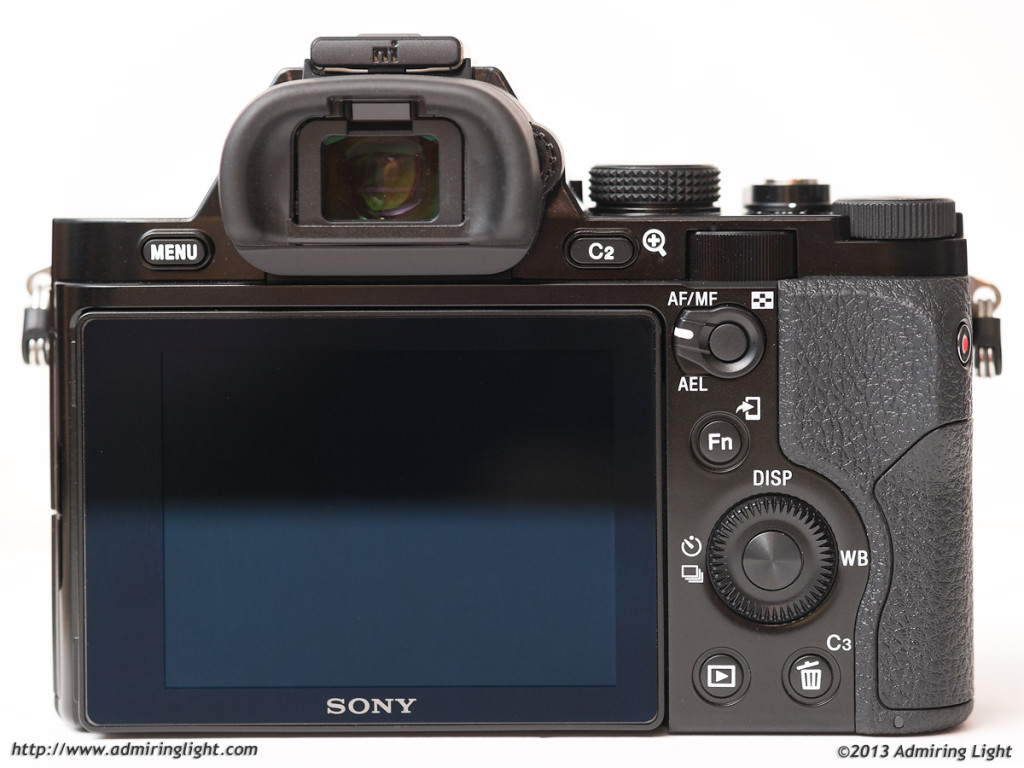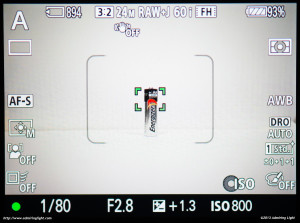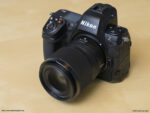Operation and Menus

The Sony A7 has a bevy of direct controls that make operating the camera straightforward and easy during shooting. The front of the camera features a dial that sits on top of the grip and it has a matching command dial on the rear of the camera which can easily be operated by the thumb. Taking a page out of the ‘retro’ camp, the A7 also features a dedicated exposure compensation dial that conveniently sits on the right of the top plate. Because of the dedicated EC dial, the front and rear dials control the same parameter in aperture priority and shutter priority modes, and they control shutter speed and aperture independently in manual mode.
The back of the camera features a function button that brings up a quick menu to access common options, a four way dial that can also be used to select options (the default is to select ISO), and a smattering of other buttons. The rear four way dial is much stiffer than the one on the NEX-7, which prevents accidental selection of ISO. Overall, the controls are well placed and easy to access with the exception of the C2 button, which sits above a ridge and is difficult to press, and the menu button, which is oddly placed on the left side of the camera. I don’t like the positioning of those two buttons, but overall, I quite liked the controls of the A7.

There are a few odd quirks with regards to operation, however. The C1 button is used to select focus points by default, which requires you to press the button, then directionally move the point around with the four-way buttons. I would occasionally move the dial, inadvertantly changing ISO, when moving the focus points around. In manual focus mode, the C1 button reveals an enlarging rectangle. Tap the button again to magnify the view. It worked fine, but is a button press too many to magnify.
Sony does offer plenty of customizability, though. The C1, C2 and C3 (trash) button can all be custom set to whatever function you wish. In a first for me, however, I actually preferred the functions that are assigned by default, so I felt no need to change from the basic setup.

The menu system features tabs and multiple pages within those tabs. There’s a lot of options to cover, but the menus are well organized and easy to navigate. As I mentioned earlier, the tabs really look like they would work well with the missing touch interface.
In all, the A7 is a camera that provides a lot of direct control. While there are some quirks to operation, the camera as a whole is great to use.
One quirk I encountered on several occasions was a bug in the image review capabilities. Every once in a while, the camera would throw an “unable to enlarge” error at me, and I would be unable to check critical focus on an image. Turning the camera off and then on again would usually correct the problem, but a few times it took two to three reboots before I could review an image. I’m sure this will be fixed in a future firmware update, but it was frustrating.
Performance and Autofocus

The Sony A7 takes a while to boot, especially with a new memory card, but otherwise is a generally responsive camera. There is a little bit of shutter lag, but the camera works very quickly shot to shot, clears the buffer quickly and is otherwise very nice to work with. I didn’t find myself waiting on the A7, and that’s a good thing. The camera features a 1/8000s top shutter speed and can rattle off 5 frames per second in burst mode, though this is without focus tracking. With tracking enabled, it’s a much more pedestrian 2.5 frames per second.
I only had one native lens to test on the A7, and that was the Zeiss 35mm f/2.8 Sonnar. With this lens, autofocus was very quick and very accurate. In most any lighting situation, it locked on quickly and surely. In the dimmest of light, the camera slows down a little and can hunt a bit, but this is the case for almost all camera systems. Overall, I found the focus to be very good.
Due to the wider angle focal length, I didn’t have the ability to really stress the continuous AF system, though what I did test came out beautifully. The phase detection pixels that are present in the center of the sensor do a good job of maintaining accurate continuous autofocus. If it weren’t for the relatively slow burst rates, the A7 might do a very nice job for sporting, provided the continuous autofocus works as well with longer lenses. From what I was able to test, however, the A7 has autofocus that will satisfy all but the most demanding photographers.





Leave a Reply